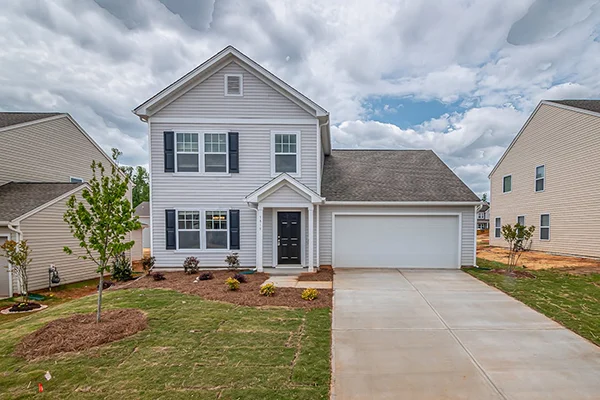
Keeping your living space in good shape isn’t about dramatic makeovers. It’s about making smart moves that hold their value over time. Whether you’re focusing on your daily surroundings or planning ahead, consistent attention to certain areas can cut costs and prevent stress. Some updates are straightforward, while others add comfort and financial return when done correctly. High-use areas, in particular, deserve more thought. Simple fixes often bring surprising results, if handled with care.
Here are some practical ways to refresh where you live without spending too much or taking on unnecessary projects:
Begin with a Seasonal Routine
Organizing routine checks around the year helps keep things on track. Set a spring-to-winter cycle for tasks like sealing air leaks, checking insulation, washing screens, and inspecting walkways. In autumn, clean out leaf buildup from around your structure, not just the gutters. During winter, check that heating units and smoke alarms are working. Summer is ideal for checking fan function, exterior caulking, and garage door seals. Breaking tasks down by season prevents you from feeling overwhelmed. It also helps prevent surprise problems. Mark your calendar with easy monthly goals. It’s better to catch an issue early rather than wait until it turns into a costly fix you could have stopped.
Why High-Use Areas Deserve More Attention
Rooms that serve practical purposes each day are more likely to show signs of wear. Water exposure, constant traffic, and time take a toll. Updating these areas not only improves your daily experience but also adds long-term value. Some companies offer swift one-day installations with durable, mold-resistant wall surrounds, built-in seating, and custom accessories that simplify hygiene routines. Their offerings suit different budgets and room sizes. Certified bathroom remodelers can also help you design layouts based on comfort, ease of use, and storage needs. Many packages include antimicrobial surfaces and low-barrier entry showers, which are ideal for households with older residents or those wanting easier upkeep.
Fix Water-Related Issues Immediately
Even a slow drip can lead to bigger concerns if ignored. Look for signs like water spots on ceilings, loose tiles, or musty smells. These could point to leaks behind walls or under flooring. Replace worn washers or valves as soon as they start acting up. Check under sinks every few weeks to spot pooled moisture. It’s also smart to inspect sealants around sinks and tubs for signs of cracking or lifting. Use silicone caulk to reseal if needed. If you live in a cold region, insulate exposed pipes before winter. A few minutes spent addressing small flaws now can help avoid major damage that ruins surfaces and costs more.
Go for Smarter Energy-Saving Choices
Efficient appliances and fixtures are worth the price over time. You can start with energy-saving light bulbs, motion sensor switches, or a smart thermostat. These changes aren’t just for lowering bills. They also create more control over your environment. You’ll notice immediate comfort when heating and cooling respond to your schedule. Swap old showerheads or faucets for water-saving versions without giving up pressure. In cooler months, place weather stripping around doors and windows to hold in heat. Layering thick curtains helps, too. If your budget allows, switch to Energy Star-rated devices gradually. Focus first on frequently used rooms. Over time, these smart swaps free up funds for other goals.
Keep Walkways and Surfaces Safe
Slippery paths or cracked concrete can lead to accidents and unnecessary stress. Address uneven areas right away. Use a pressure washer to clean built-up grime from surfaces. Patch minor chips with store-bought filler if you notice rough spots or crumbling. For paved surfaces, look at joints and edges where weeds or moss might creep in. Removing organic growth not only keeps things tidy but also avoids surface damage. During colder seasons, lay down salt or sand to reduce slips. If outdoor lighting is dim, install motion-sensor lamps near stairs or entry points. Small adjustments like these go a long way in making your surroundings safer and easier to manage.
Make the Kitchen Easier to Work In
You don’t need a full tear-down to refresh your cooking space. Start with small changes that help with flow and function. Replace loose handles, faulty hinges, or uneven drawer tracks. If surfaces are scratched or stained, consider resurfacing instead of replacing them. Stick-on backsplash panels or a fresh coat of paint can change the look with minimal time. Upgrade faucets or lighting if they’re outdated or hard to clean. Keep storage accessible and avoid overfilling cabinets. Use shelf liners or pull-out trays to help you reach items easily. Making your cooking area more usable doesn’t have to cost much, and makes everyday routines feel smoother and more enjoyable.
Check Air Flow in the Right Places
Good ventilation is essential, especially in places that collect moisture. Poor air circulation can cause mold or mildew, which leads to smells and long-term damage. Start by cleaning your vents and filters. Replace them if they look worn or clogged. If your ceiling fans feel wobbly or noisy, check their alignment and settings. Install exhaust fans in humid spots if they don’t already exist, and check that existing fans actually vent outside, not just into the attic. Portable dehumidifiers are also helpful for damp corners. Keeping the air moving helps you stay comfortable and reduces wear on building materials over time, especially in spaces that see regular use.
There’s no need for a complete overhaul to make where you live work better. Small decisions, done consistently, go a long way. Regular check-ins and smart updates help avoid big expenses later. Focus first on areas that matter most in everyday use. Whether it’s better lighting, added comfort, or updating high-traffic rooms, each effort adds up. Don’t wait for damage to tell you where to act. Stay ahead of it. Keeping your space well-managed doesn’t mean perfection. It means being aware, prepared, and thoughtful. The result? Fewer surprises, more peace of mind, and a living space that works better for everyone inside it.

